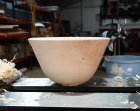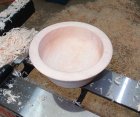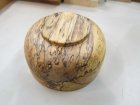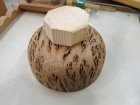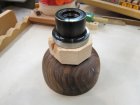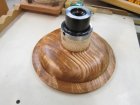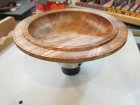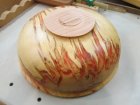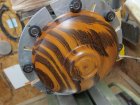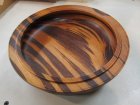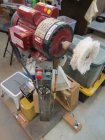My first post in this forum. I've been posting in the getting started forum so you guys know I'm new and appreciate all the help I got there. I've turned 3x3 by two feet long spindles for a couple of days with the spindle gouge and skew. Yesterday I add 300 pounds to the bottom of my lathe and built a sawing station. I prepared a bowl blank on my saw station, mounted it on a faceplate, struggled until late last night, and all I had left was shavings for the horse stall. I started this morning on another blank to make a 10-inch bowl but changed the grind on the Carter and son gouge to a 40/40 platform grind. Well to my surprise I could actually make a cut with it. I got all the bark off, made it round, and got some shape to it. I'll shape it better, I hope, in the morning and now my question. I have a set of 2-inch and 4-inch dovetail jaws. Which size should I use and should I use a tenon or recess? It is green and I ask so I can chuck it up again after it drys. This woodturning is addicting after I take care of the animals each morning I go straight to the shop. If you see something in my pictures that looks off please let me know.
My attempt...
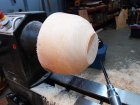

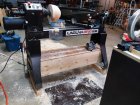
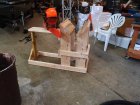
My attempt...






